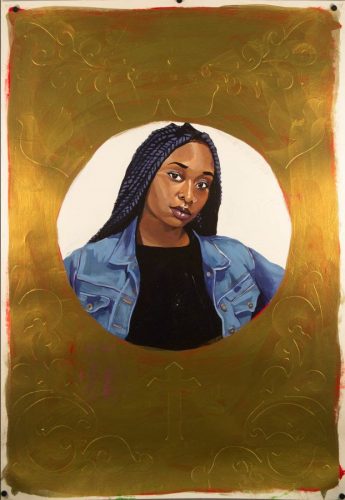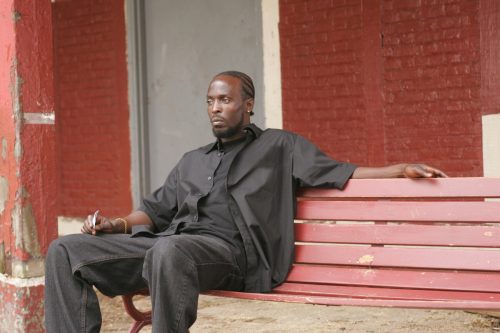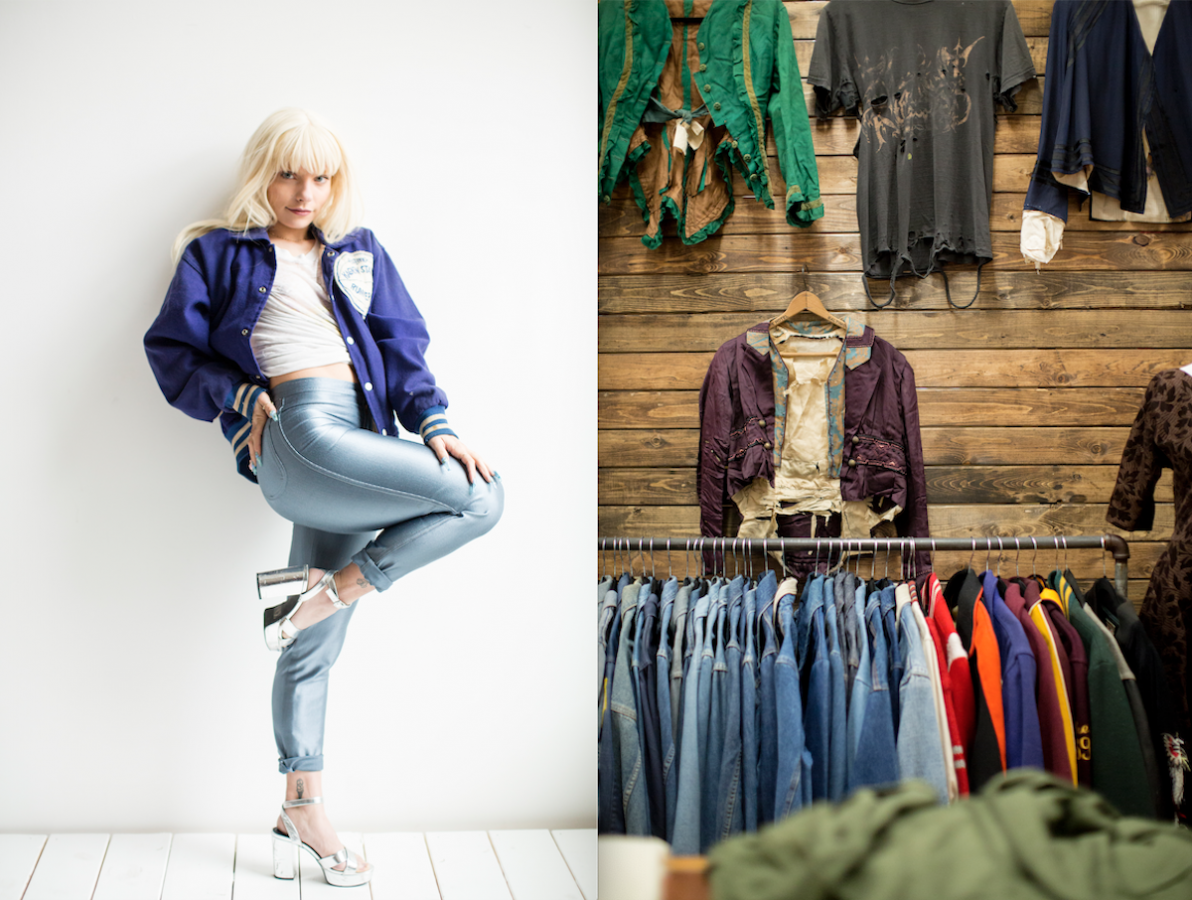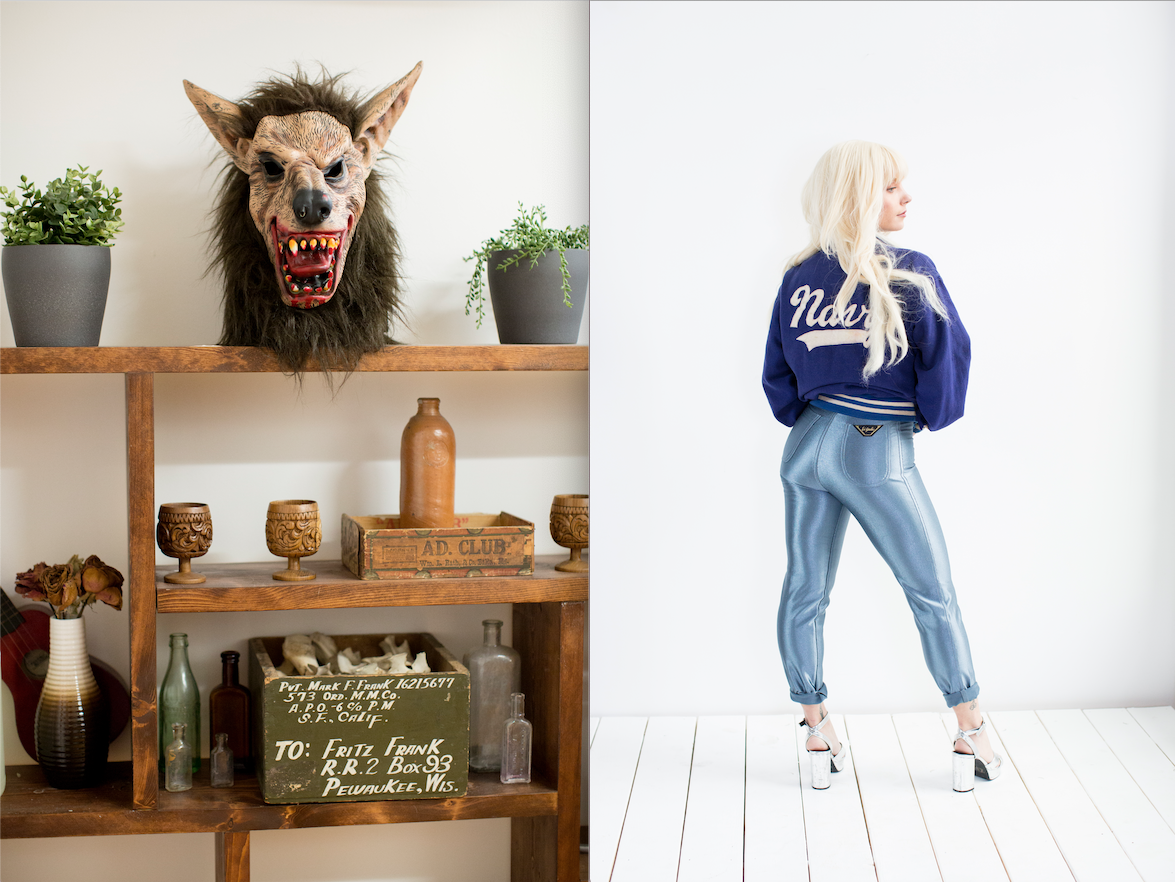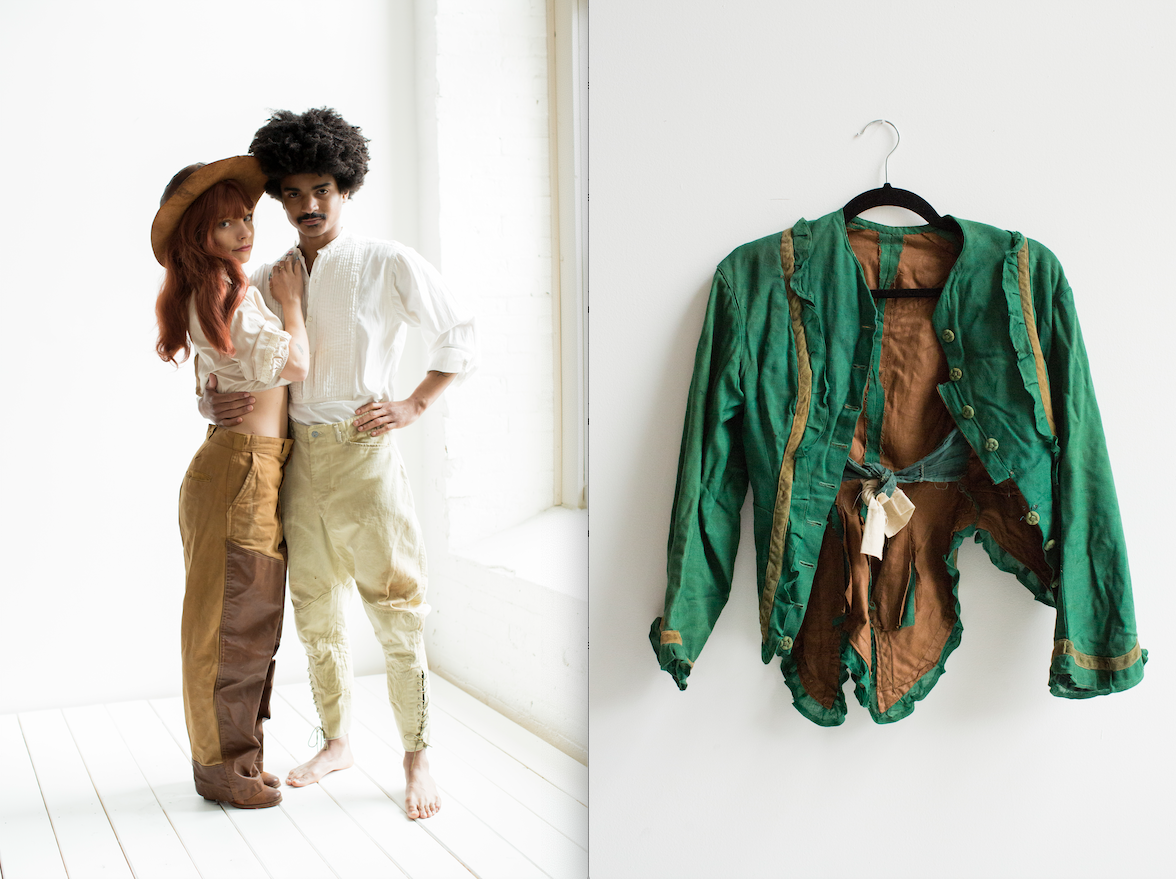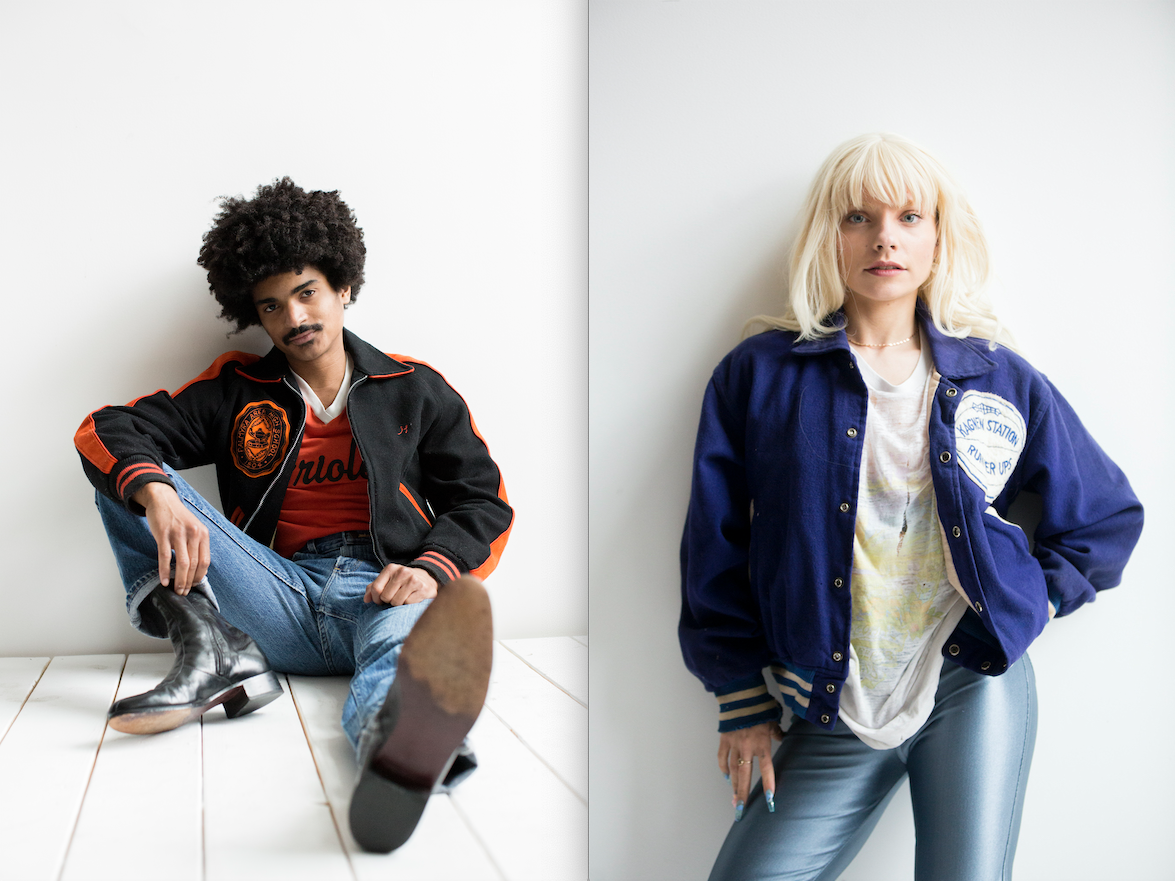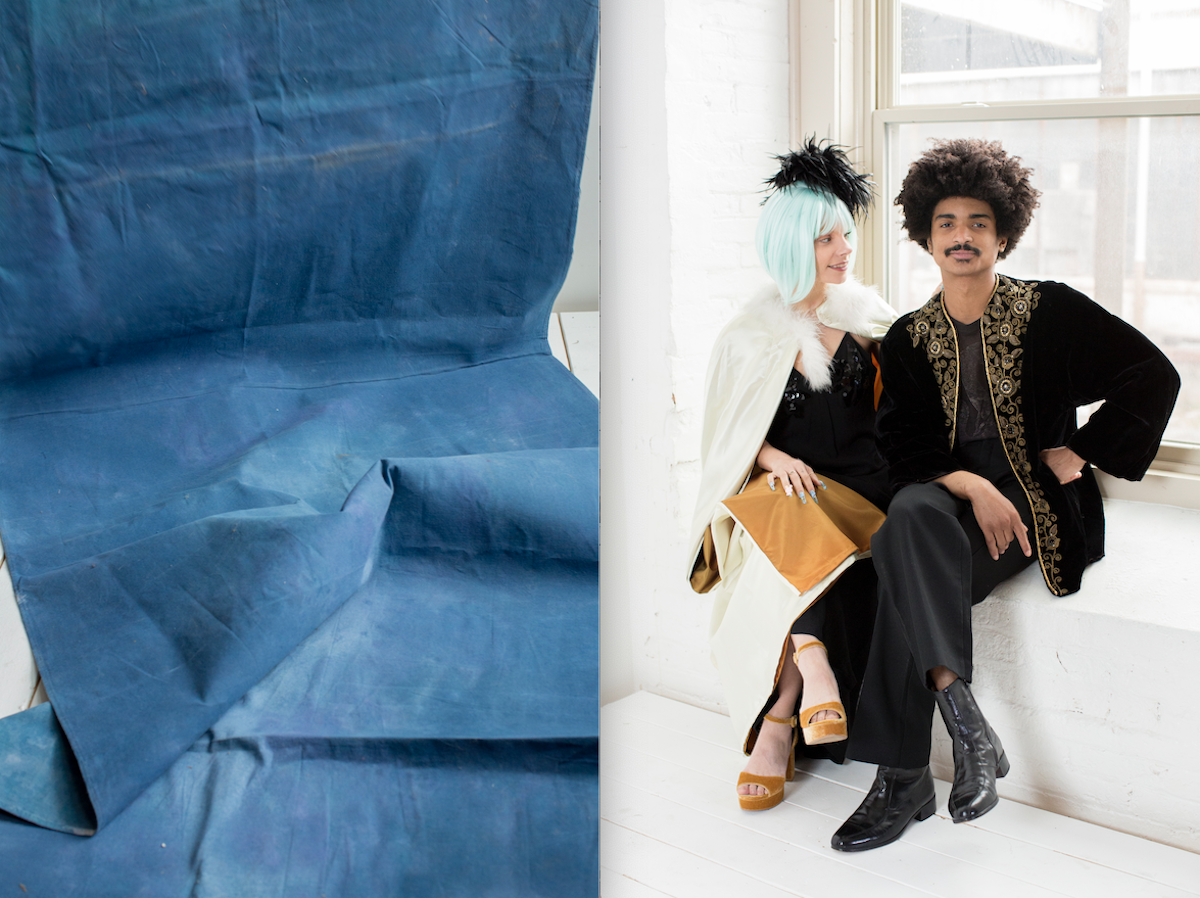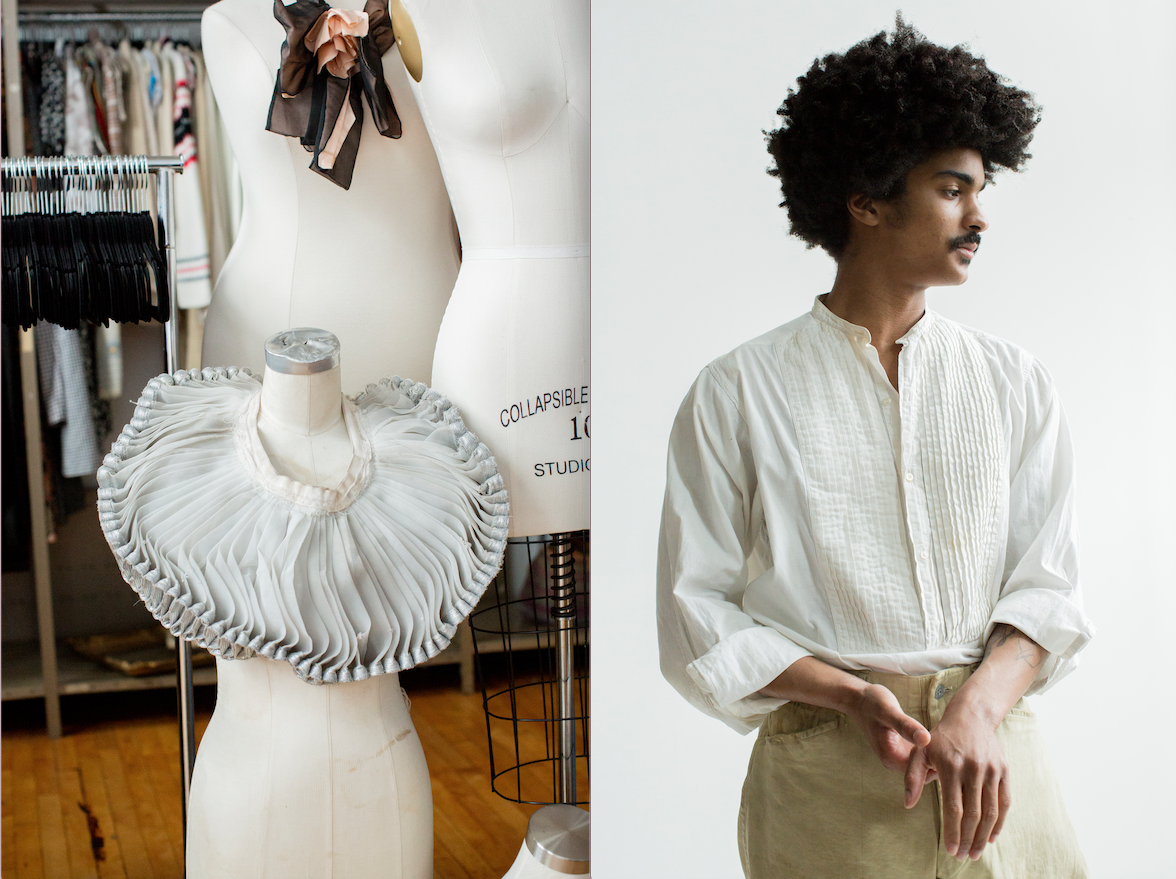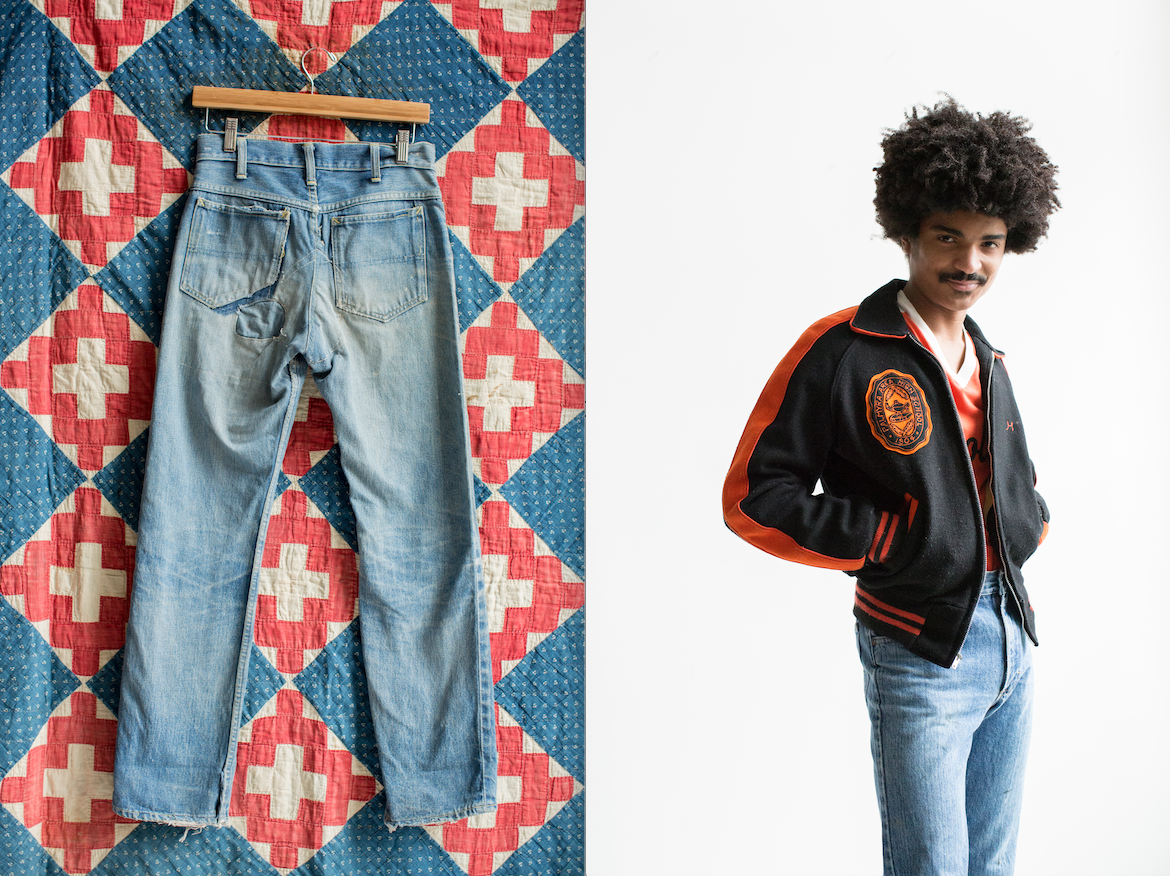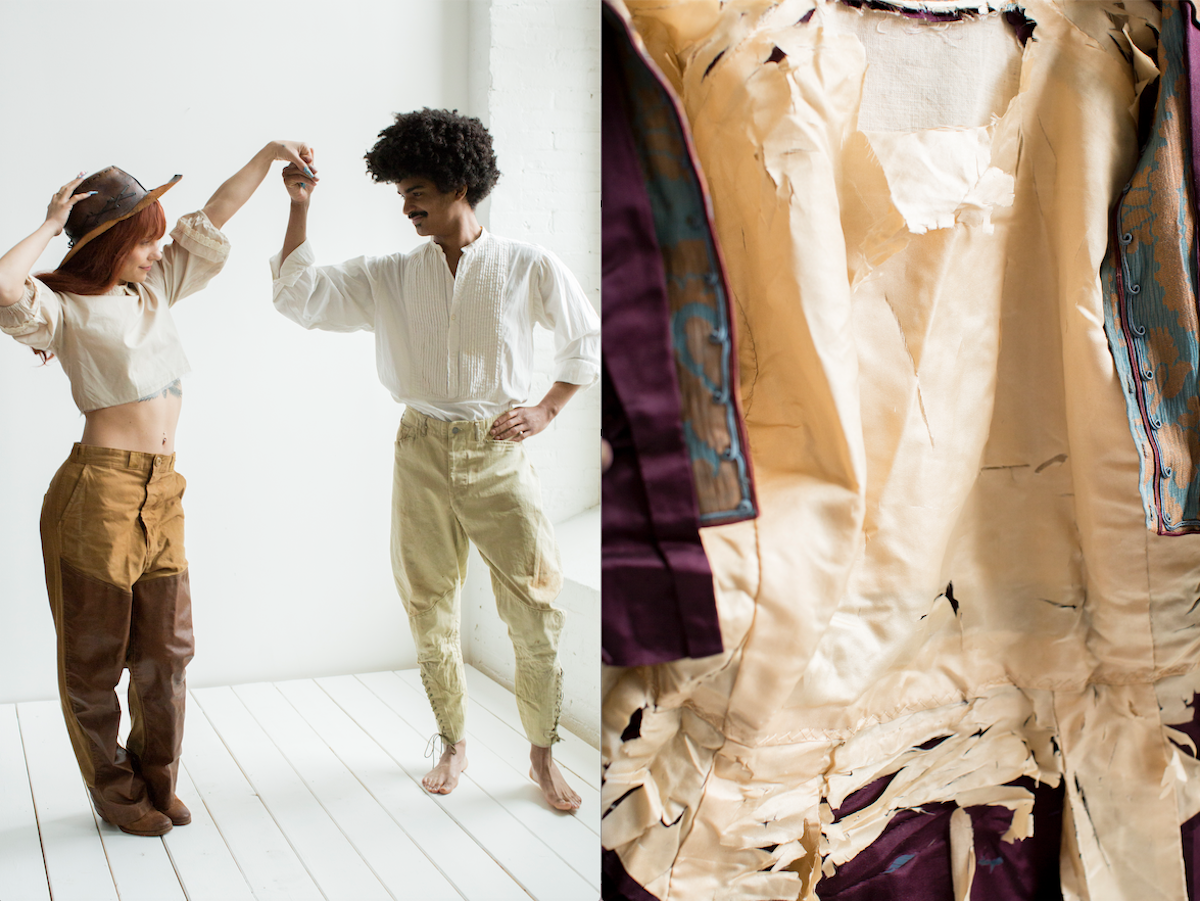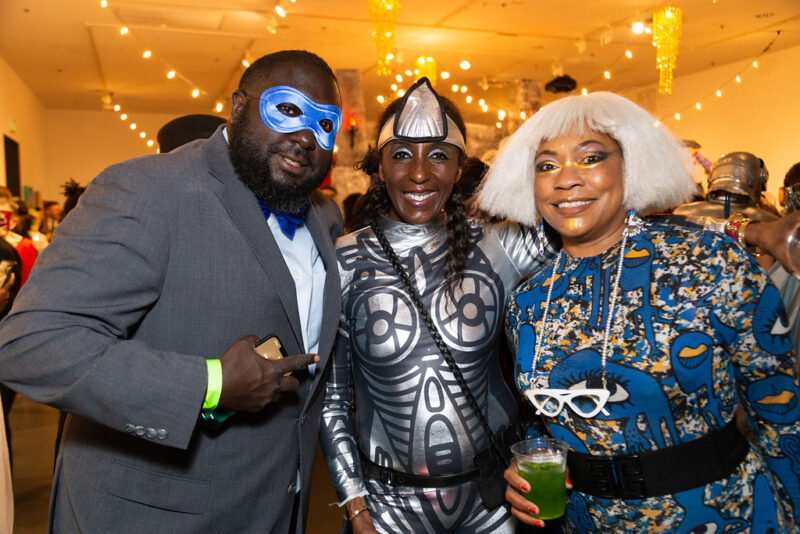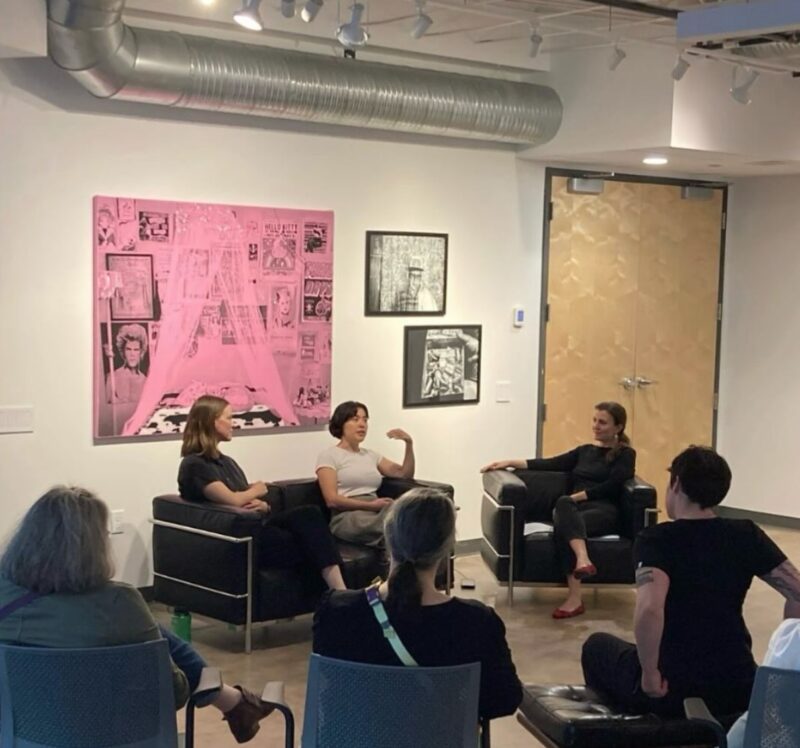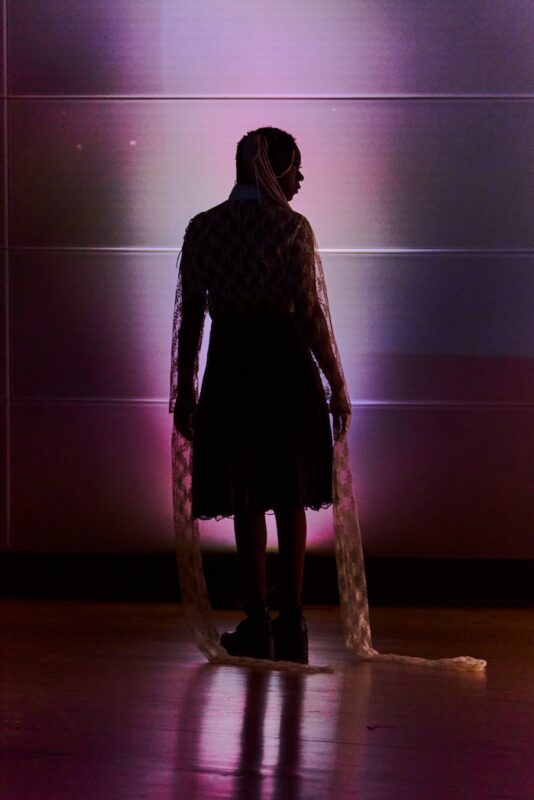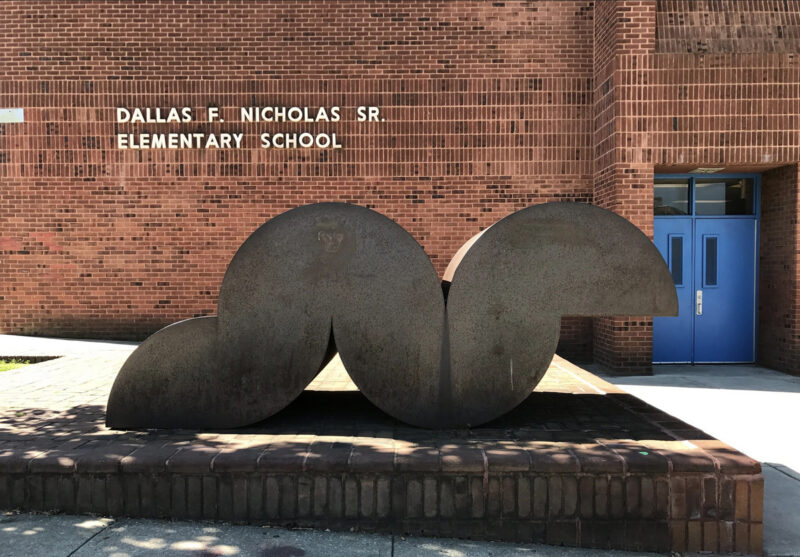For Angie Gavin and Kate Schultz of Milk & Ice Vintage, clothing is a concept centered in cultural anthropology and material culture. Their cavernous Woodberry studio boasts hundreds of clever T-shirts, piles of denim, and the array of Halloween costumes that earned them legions of Instagram fans. However, it is their collection of extremely rare garments from the Victorian and Edwardian eras (1860s-1880s) that has kept the pair’s rapt interest.
Although they are too delicate to wear, these capes, corsets, corset covers, undergarments, and gowns adorn the twenty-five-foot-tall walls of their studio. “There are times when we have owned pieces and felt that they deserved to be in a museum rather than on a body, in order to preserve their integrity,” Gavin and Schultz say. “We don’t make a living selling these, but we love using them as a study in era construction of clothing.”
Milk & Ice started out as a co-op booth in the now-defunct Hampden Antique Mall in 2012, but then expanded to a storefront on The Avenue hosted with Christian Sturgis from 2013 to 2020. When the pandemic hit, Milk & Ice moved their operations to a private Woodberry studio, previously used to store and process—wash, mend, organize, photograph, research, price, and tag—their growing collection. They decided to close the retail aspect and use their studio as a main hub instead, focusing on selling online, with private appointments to sell on a one-on-one basis. In the fall of 2021, Milk & Ice plans to move their operation to the Northeast Baltimore area where Gavin and Schult both live, with a new storefront on Harford Road in Lauraville. They plan to use the space as a private studio during most weekdays, processing, photographing, buying vintage, and offering private shopping appointments, and then open to the public on weekends.
